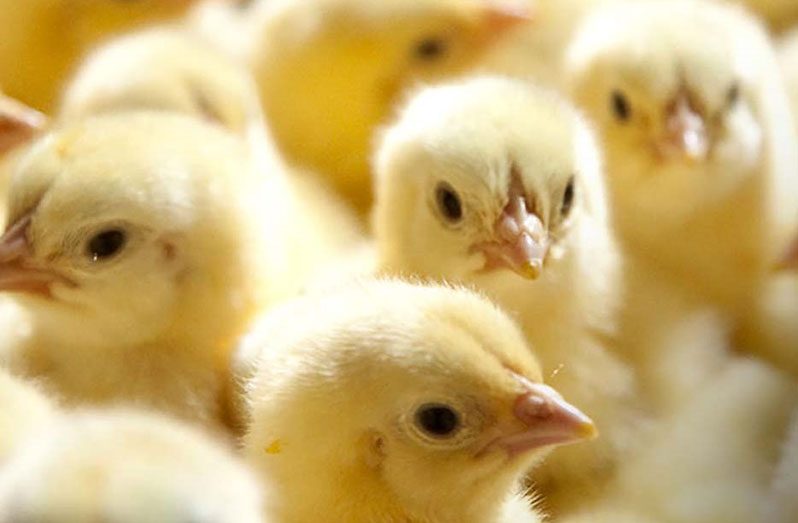–company says project will create employment for 50 residents of Pearl
HAVING already established a notable presence in the local market with its renowned fast-food brands, Church’s, Dairy Queen and others, ‘Camex’ will be moving to expand its operations with the construction of a $200 million Hatchery and Poultry Processing Plant at Pearl, on the East Bank of Demerara (ECD).
Through its subsidiary, Camex Broiler Breeders Inc., the company will be establishing the facility on a plot of land stretching over five acres. In a project summary submitted to the Environmental Protection Agency (EPA), the company related that the site, used for poultry rearing, is presently occupied by four 20ft x 100ft wood and concrete chicken pens and living quarters for the farmhand.
The project site is surrounded by vegetation which serves as a barrier against visual impacts. It is bordered to the north and east by similar agricultural activities, residential activities to the west and a canal to the south of the facility.
With its foundation in the poultry industry, the $200 million project will serve as an expansion for the company.
In outlining the specifics of the project, the company said the hatchery would be constructed on the northeastern section of the land with a footprint of 2,800 sq. feet, while the processing plant would be constructed on the south-western part of the land. It will be a single-storey facility with a total occupied area of 13,000 sq. ft.
The plant will be designed to hatch fertilised eggs, rear, and process chickens for meat production.
Through its new facilities, the company will be processing 4,000 – 6,000 chickens weekly, and projects a monthly volume of production of 64,000 to 96,000 pounds of chicken. Chicken will be packaged whole and cut into pieces for offsite retail and wholesale.
“The project also entails the construction of additional facilities to support the main operation of the hatchery and poultry processing facility. This includes an eight-foot wide access bridge to the facility from the main access road and about 750ft of internal roads to link various operations on the property,” the company outlined in its project summary.
The construction phase of the project will last for nine months after commencement, while the operational phase will be for a period of more than 20 years. It will create employment for 50 people in the community of Pearl and nearby communities during its construction (10 people) and operational (40 people) phases.
Camex assured the EPA that the project will operate at the highest standards to safeguard the environment and in accordance with the requisite laws and regulations of Guyana, such as the Environmental Protection Act, 1996 and the Occupational Safety and Health Act, 1997.
Waste will be managed to reflect the principles of sound environmental management in accordance with established environmental regulations, to prevent and mitigate negative impacts to the environment.
The overarching objective of the company is to address the growing need for healthy chicken meat to supply the local market. In Guyana, the livestock sub-sector contributes approximately 13.6 per cent of the agricultural Gross Domestic Product (GDP) and 2.8 per cent of the total GDP.
Livestock is commonly defined as domesticated animals raised in an agricultural setting to produce labour and commodities such as meat, eggs and milk, among other things. In this Region, the Food and Agriculture Organization (FAO) has predicted that the demand for food will increase by 50 per cent by 2030 and 70 per cent by 2050.
And, according to the FAO, livestock production constitutes a very important component of the agricultural economy of developing countries, a contribution that goes beyond direct food production to include multipurpose uses, such as skins, fibre, fertiliser and fuel, as well as capital accumulation.
Furthermore, livestock is closely linked to the social and cultural lives of several million resource-poor farmers, for whom animal ownership ensures varying degrees of sustainable farming and economic stability.
Considering the potential of the livestock industry, the government has taken steps to not just encourage direct investments, but to also initiate the production of feed material locally.
The massive soya bean trial farm at the Dubulay Ranch at Ebini, along the Berbice River, has begun to bear fruit, with yields of up to two tonnes per hectare which is of good, export quality.
In addition to this trial project which is expected to drive down the cost of inputs, the government gave the poultry industry zero-rated VAT status and removed Value Added Tax (VAT) on fertilisers, agrochemicals, pesticides and key inputs in the poultry sector, including poultry feed, building materials and packaging.
Since those adjustments, there has been a stark increase in investments in this industry, with about 500 new farmers getting into poultry farming between August and December, 2020, alone.




.png)









